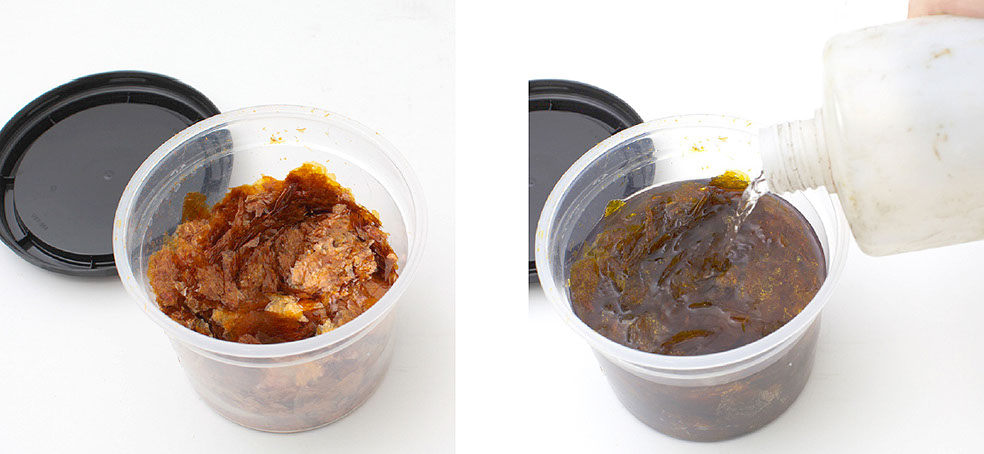French Polishing Techniques
Calvert Regan, 2017
An Introduction & Overview of the French Polishing Process
The French polishing process wasn’t widely used in the UK until the 1851 Great Exhibition in London where it was introduced to a very receptive public. French Polishing was so well received that its qualities helped to define the Victorians optimistic tastes for the bright, fashionable and new.
French Polishing is a lengthy and skillful process of applying shellac in a particular way to the surface of prepared wood. First a level coating of shellac is applied. This is then burnished with a cloth pad soaked in alcohol and shellac, sparingly lubricated with raw linseed or poppy oil. Finally a soft, cloth covered pad dampened with alcohol is drawn lightly and speedily across the surface to remove the oil leaving a very smooth surface. This process enables a very high shine of a characteristic lustrous quality to be produced on the furniture’s surface. As the process is time consuming and very skillful it is greatly valued in high quality furniture.
Speedier processes were developed through the Victorian and Edwardian periods with shellac as the principle ingredient. The addition of other additives allowed the finish to be laid as a self-levelling varnish applied manually with a brush. This is known as spirit varnish.
An immense quantity of furniture was produced in the Victorian and Edwardian periods eclipsing all produced in earlier periods. This fashionable furniture was finished with either French Polishing or with other shellac based manual processes of varnishing. This is the finish that is most commonly encountered by the restorer and conservator and so a working knowledge of the shellac processes is essential.
What is Shellac?
Shellac is a secretion of the Lac Insect (Kerria Lacca), which is native to India and Thailand. The secretion is collected, having dried hard, from the woody parts of trees. It is available in various colours including blonde, button and garnet. The colour of the shellac is determined by the type of tree the Lac insect feeds on. It is purchased as flakes, buttons or chips. The polish can be made by simply dissolving the refined shellac in alcohol.

Preparing shellac French Polish - Dissolving shellac flakes in alcohol
Shellac Variations & Propriety Recipes
Various recipes were created by Victorian and Edwardian craftsmen. There are many variants of shellac, copal and other gum resin based finishes composing of ingredients that give their finishes particular properties.
Colours in the form of pigments or dyes may also be added to the coating. Gums like gum arabic bensoin, rosin, sanderac, mastic resin were used according to the requirements of the artisan. These proprietary mixtures would be kept trade secrets as their particular properties would enhance the speed of the work or the aesthetic appeal of the artisan’s furniture.
French Polishing Videos & Tutorials
The following videos were prepared by our second company, Thinking Hand Studios, and part of the Traditional French Polishing course offered at the Burleigh Heads Studio.
Making a French Polishing Rubber
Making Button Polish
Common French Polishing Mistakes & Remedies
French Polishing Mop Maintenance
French Polishing Course : Module 3 | French Polishing for Antique Furniture
Introduction to Module 3 | French Polishing for Antique Furniture
ARC Services and Thinking Hand Studios have prepared a French Polishing Course eBook and companion DVD. This is written and presented by Calvert Regan who has had more than 40 years professional antique restoration & conservation experience.
